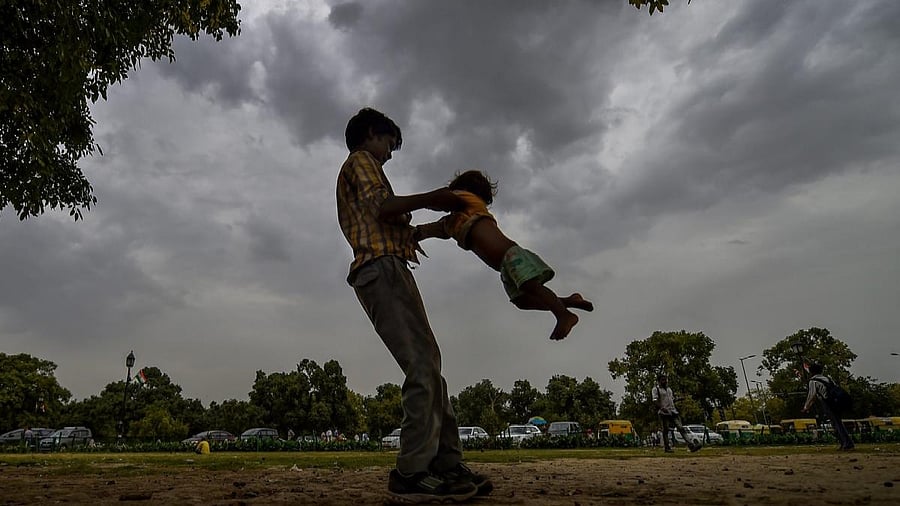
A young boy plays with a child as monsoon clouds gather.
Credit: PTI photo
New Delhi: Barring the south eastern part of the state, Karnataka is likely to receive “below normal” monsoon in August, the India Meteorological Department said here on Thursday, noting that the south west monsoon will be in a “subdued state” in the first two weeks of August.
Though a monsoon revival will happen after the independence day, large swaths of central and western India, North East, Karnataka and Kerala would experience poor rainfall.
But overall the second-half of the monsoon season will experience “above normal” rainfall with more than 106 per cent of the average rainfall of 423 mm because of anticipated surge in September.
The weather bureau with 6,727 rain gauges is also set to issue block level forecasts for 7,200 administrative blocks for better planning and resource utilisation. This comes more than three decades after IMD launched district level rainfall monitoring in 1992.
The August-September precipitation will be “above normal” for most of the country barring coastal Karnataka, Kerala, Bihar, sub-Himalayan West Bengal and a large part of the North East that are likely to receive “below normal” rainfall.
The south west monsoon arrived early this year and the first two months of the season saw bountiful rain in most of the meteorological subdivisions barring east Uttar Pradesh, Bihar, sub-Himalayan West Bengal, Rayalaseema and most of the North East.
The first half of the monsoon (June-July) ended with 6 per cent surplus rain for the country as a whole.
“From August 1, the monsoon rainfall will be subdued. Even today it is 22 per cent less than the average. The monsoon will pick up again after August 15,” said Mrutyunjay Mohapatra, director general meteorology at IMD.
The forecast suggests less rainfall across central India and the upper part of the peninsula in the first two weeks of August after which the monsoon will regain strength.
By the fourth week of August, it will be pouring in most parts of the country except the North East and adjoining east Indian states like Bihar and West Bengal.
The monsoon is the lifeblood of India's nearly $4 trillion economy, providing 70 per cent of the rainfall needed for agriculture besides replenishing ground aquifers and reservoirs.
Nearly half of India's farmland is not irrigated and depends on the June-September rains for crop growth.
In May, the IMD said India would receive 106 per cent of the average rainfall of 870 mm during the June–September monsoon season. Rainfall ranging between 96-104 per cent of the 50-year average is considered "normal".
